Reece Curwen is a crop and sheep farmer near the Stirling mountain range in the southwest of Western Australia (WA).
He was the Nuffield scholar in 2015 and sustainability is very much part of his thinking as a farmer following his Nuffield experience.
When the Irish Tillage and Land Use Society (ITLUS) tour visited his farm in January 2020, Reece was farming about 12,000 hectares, about 8,000ha of which was sown to a range of annual crops.
As was common in WA, the cropping area was mixed with sheep and he had about 50,000 head at that point.
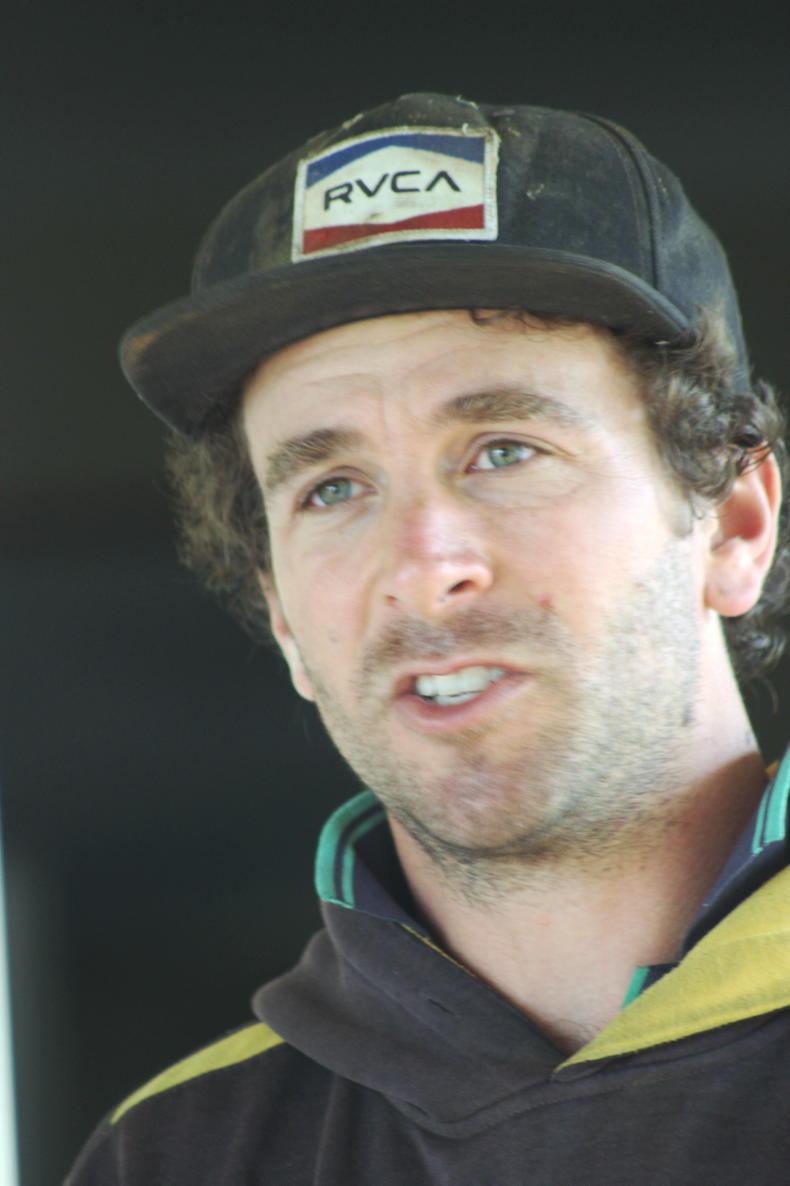
Reece Curwen explained the principles behind his farming system and the importance of sustainability for the business.
With a spread of that size, labour was very important, but it is also very scarce. Reece told us that family labour is very important to his business, but he also has six full-time staff and normally about four casual workers or backpackers.
He said that managing people is both a challenge and a skill and he keeps all his people involved in decision-making on the farm.
Indeed, the business operates on core values, which are set by the workers themselves.
Having the full co-operation of the workers is also important, because the land he farms extends about 25km to the north, south, east and west.
Profit with integrity
Reece commented that the mission statement for his farming business is profit with integrity. This also means that sustainability is a serious consideration for the business.
He commented that farmers in WA get away with doing things that they should not do, but that has been changing and this will continue.
Tightening margins and extreme weather events mean that every hectare must be capable of generating a return if a business is to prosper. This means that he pays attention as to how almost every square metre is managed and performing.
50,000 sheep
Sheep are an integral part of the sustainable operation of this farming business. The flock is made up of breeding ewes and bought-in lambs for fattening, so the sheep business runs year-round.
Rams are let in to the breeding ewes in February and lambing takes place during July and August mainly.
Lambs are then sold between October and December, but some lambs will still be on the farm until March. This means that a lot of co-ordination is necessary to properly manage the sheep and crop activities.
Pasture and cropland are rotated about every three years and it is roughly three years of crops and three years of pasture, depending on weather.
He told us that most of the land in the area is tired from cropping and so it needs a legume in the rotation to help recharge it.
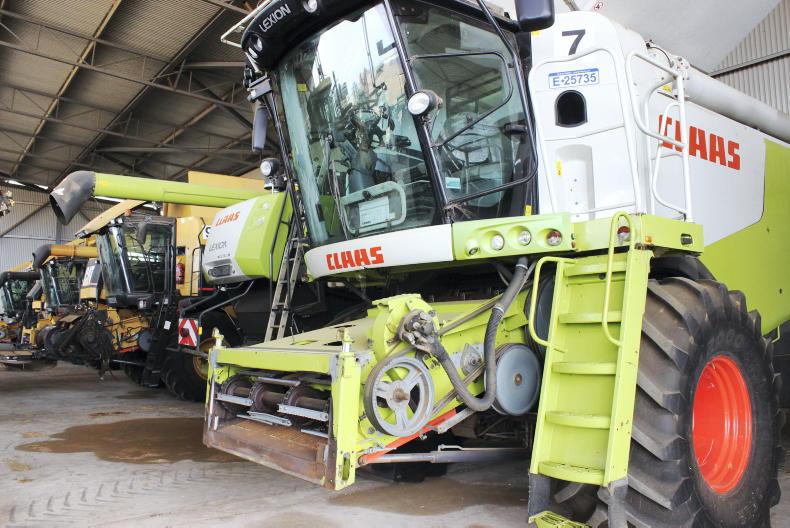
He runs eight combines at harvest which are sall secondhand machines maintained on the farm.
At that time, sheep were the most profitable land use option. He was then running around 20,000 ewes, plus the bought-in lambs.
He said he would like to have more sheep on the farm as the land was there, but staff was a real issue for him. Stock people are very difficult to get when compared with crop or machine people, he said.
Reece said that lamb prices tend to be higher for him in March and April, but 60% of his lamb sales take place in the November period, so that adds price pressure to the business.
All his sheep carry EID tags for identification purposes. This is a lot of extra work and cost when you have 50,000 sheep, but he finds it very useful for tracking weights, etc, in the flock. It is seen as even more useful for the sheep that ultimately go to feedlots.
Reece commented that these EID tags might become compulsory in Australia in the coming years. He described them as “nifty technology”, but they turn into a lot of money at a cost of $1.50 (€0.96) per tag.
Buying in lambs is part of the business, but he buys them when the price is right, rather than at any particular time of year.
About 60% of his flock are Merino and about 40% are from crosses with the poll Dorset breed.
His average lambing percentage over time is one lamb per ewe per year. Any barren ewes will be sold for mutton and replacements will be purchased to keep numbers steady.
Grazing crops
Grazing of the cereal and rape crops is seen as part of the farm management practice, especially at times when it is necessary to do so.
He referred to grazing crops as free feed. However, grazing is always light to keep the crops intact and it is generally completed over a 10-week period on about 75% of the area.
Paddocks are normally sown down in February when land is being put back into grass. This means a light discing and then the seeds are sown when the rain comes.
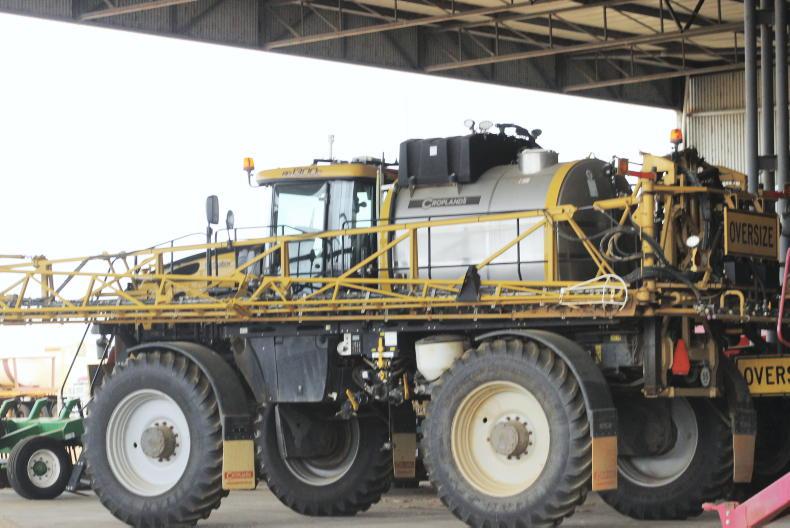
Reece Curwen had a number of self propelled sprayers to cover the 8,000ha of crops.
About half of his pastureland will regenerate naturally post-discing, as the grass and clover seeds exist naturally in the soil. This is a considerable potential saving over time. At the end of the grazing period, pasture is burned off ahead of cropping.
Winter feed traditionally came from grazing, but he is beginning to make silage to supplement the stock in the dry season. This means that the vast majority of the total feed is produced on the farm, with lupins being the only product that is bought in as a protein source.
While drought is seldom a problem for him, floods can also be a serious challenge at times
The silage ground is sown to a mix of oats, ryegrass and vetch, which is cut once per season. However, they are beginning to cut earlier so as to have regrowth for grazing.
He was using a contractor to harvest the silage and this was costing him between AUS$30,000 and $40,000 (€19,000 to €25,500). When we visited, he was considering investing in a silage rig given that he had so much of his own machinery already.
Water
While rainfall amounts tend to increase as one moves southwestwards in WA, water availability is still an issue for Reece. Groundwater tends to carry salt and, therefore, water availability is largely confined to rainwater storage.
He said that the rainfall level in his area is about 400mm per annum, but this rises to 800mm about 100km further north. During our visit, he said he would need a few 50mm to 60mm rain events to fill the dams needed to sustain good agriculture.
The timing and management of rainfall is a huge challenge. While drought is seldom a problem for him, floods can also be a serious challenge at times, with all of their associated implications.
Crops
More than half of his crop area is made up of canola and barley, with wheat and oats being most of the rest. Reece commented that he normally does not have much wheat because of the higher frost risk relatively close to the coast.
When he plants wheat, it is normally sown at the end of July to help avoid September frosts during flowering and grain fill. He said the temperatures down around 2°C to 3°C can actually hit flowering.
About half of his oilseed rape or canola is sown to GM varieties to help with weed control. The major problem is volunteer ryegrass, which had become a serious problem on the farm as it developed herbicide resistance. This problem is not as bad now as it was a few years ago, thanks to rotation and the use of glyphosate.
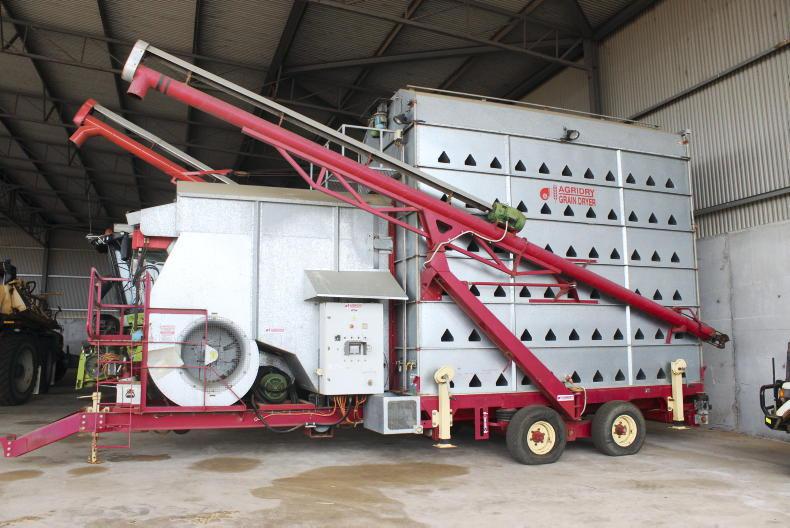
This 40t/hr grain dryer has given Reece Curwen considerable added flexibility at harvest.
Interestingly, Reece said that he had to take a $40/t price cut on his GM rape. Canola is often sown as frequently as every second year and this means problems with blackleg and sclerotinia.
He does not normally grow malting barley, because his most likely rainfall will occur at harvest and this can cause quality issues. But, for this same reason, Reece runs a 40t/hour grain dryer and he regards this as a huge asset.
His average barley yield is around 3.2t/ha and the same for wheat. Canola is doing about 1.7t/ha on average. Crop yields have been increasing over time, especially the GM rape which is much better now, he commented.
Equipment
One of Reece’s farming objectives is to keep equipment costs down to avoid excessive depreciation. But the consequences of this is that his equipment is older and so he needs good machine people to keep them operational.
The farmyard had a lot of machine skeletons from different types of equipment which were being cannibalised to help repair other machines. He has a number of big tractors and he has eight combines working at harvest.
He also has his own trucks, which are used to haul inputs, outputs and sheep. He also has lots of stores on the farm to hold machines, enable machine repair and store feed for livestock.
Red tape
While farming in Australia gets no real government support, this does not prevent red tape from being an issue. Consumer pressure is increasing along the supply chain and this has become an essential part of doing business.
He said they must now follow an audit system to grow canola. This is most likely because the EU is seen as a destination market for this crop. He thinks that other crops may also be headed in the same direction for traceability.
China is a big factor for farming businesses. It is a big destination for Australian exports, but it is seen as a big risk and a big challenge. It was described as a ruthless market, where they make up their own rules and they still want everything for almost nothing.
Reece Curwen is a crop and sheep farmer near the Stirling mountain range in the southwest of Western Australia (WA).
He was the Nuffield scholar in 2015 and sustainability is very much part of his thinking as a farmer following his Nuffield experience.
When the Irish Tillage and Land Use Society (ITLUS) tour visited his farm in January 2020, Reece was farming about 12,000 hectares, about 8,000ha of which was sown to a range of annual crops.
As was common in WA, the cropping area was mixed with sheep and he had about 50,000 head at that point.

Reece Curwen explained the principles behind his farming system and the importance of sustainability for the business.
With a spread of that size, labour was very important, but it is also very scarce. Reece told us that family labour is very important to his business, but he also has six full-time staff and normally about four casual workers or backpackers.
He said that managing people is both a challenge and a skill and he keeps all his people involved in decision-making on the farm.
Indeed, the business operates on core values, which are set by the workers themselves.
Having the full co-operation of the workers is also important, because the land he farms extends about 25km to the north, south, east and west.
Profit with integrity
Reece commented that the mission statement for his farming business is profit with integrity. This also means that sustainability is a serious consideration for the business.
He commented that farmers in WA get away with doing things that they should not do, but that has been changing and this will continue.
Tightening margins and extreme weather events mean that every hectare must be capable of generating a return if a business is to prosper. This means that he pays attention as to how almost every square metre is managed and performing.
50,000 sheep
Sheep are an integral part of the sustainable operation of this farming business. The flock is made up of breeding ewes and bought-in lambs for fattening, so the sheep business runs year-round.
Rams are let in to the breeding ewes in February and lambing takes place during July and August mainly.
Lambs are then sold between October and December, but some lambs will still be on the farm until March. This means that a lot of co-ordination is necessary to properly manage the sheep and crop activities.
Pasture and cropland are rotated about every three years and it is roughly three years of crops and three years of pasture, depending on weather.
He told us that most of the land in the area is tired from cropping and so it needs a legume in the rotation to help recharge it.

He runs eight combines at harvest which are sall secondhand machines maintained on the farm.
At that time, sheep were the most profitable land use option. He was then running around 20,000 ewes, plus the bought-in lambs.
He said he would like to have more sheep on the farm as the land was there, but staff was a real issue for him. Stock people are very difficult to get when compared with crop or machine people, he said.
Reece said that lamb prices tend to be higher for him in March and April, but 60% of his lamb sales take place in the November period, so that adds price pressure to the business.
All his sheep carry EID tags for identification purposes. This is a lot of extra work and cost when you have 50,000 sheep, but he finds it very useful for tracking weights, etc, in the flock. It is seen as even more useful for the sheep that ultimately go to feedlots.
Reece commented that these EID tags might become compulsory in Australia in the coming years. He described them as “nifty technology”, but they turn into a lot of money at a cost of $1.50 (€0.96) per tag.
Buying in lambs is part of the business, but he buys them when the price is right, rather than at any particular time of year.
About 60% of his flock are Merino and about 40% are from crosses with the poll Dorset breed.
His average lambing percentage over time is one lamb per ewe per year. Any barren ewes will be sold for mutton and replacements will be purchased to keep numbers steady.
Grazing crops
Grazing of the cereal and rape crops is seen as part of the farm management practice, especially at times when it is necessary to do so.
He referred to grazing crops as free feed. However, grazing is always light to keep the crops intact and it is generally completed over a 10-week period on about 75% of the area.
Paddocks are normally sown down in February when land is being put back into grass. This means a light discing and then the seeds are sown when the rain comes.

Reece Curwen had a number of self propelled sprayers to cover the 8,000ha of crops.
About half of his pastureland will regenerate naturally post-discing, as the grass and clover seeds exist naturally in the soil. This is a considerable potential saving over time. At the end of the grazing period, pasture is burned off ahead of cropping.
Winter feed traditionally came from grazing, but he is beginning to make silage to supplement the stock in the dry season. This means that the vast majority of the total feed is produced on the farm, with lupins being the only product that is bought in as a protein source.
While drought is seldom a problem for him, floods can also be a serious challenge at times
The silage ground is sown to a mix of oats, ryegrass and vetch, which is cut once per season. However, they are beginning to cut earlier so as to have regrowth for grazing.
He was using a contractor to harvest the silage and this was costing him between AUS$30,000 and $40,000 (€19,000 to €25,500). When we visited, he was considering investing in a silage rig given that he had so much of his own machinery already.
Water
While rainfall amounts tend to increase as one moves southwestwards in WA, water availability is still an issue for Reece. Groundwater tends to carry salt and, therefore, water availability is largely confined to rainwater storage.
He said that the rainfall level in his area is about 400mm per annum, but this rises to 800mm about 100km further north. During our visit, he said he would need a few 50mm to 60mm rain events to fill the dams needed to sustain good agriculture.
The timing and management of rainfall is a huge challenge. While drought is seldom a problem for him, floods can also be a serious challenge at times, with all of their associated implications.
Crops
More than half of his crop area is made up of canola and barley, with wheat and oats being most of the rest. Reece commented that he normally does not have much wheat because of the higher frost risk relatively close to the coast.
When he plants wheat, it is normally sown at the end of July to help avoid September frosts during flowering and grain fill. He said the temperatures down around 2°C to 3°C can actually hit flowering.
About half of his oilseed rape or canola is sown to GM varieties to help with weed control. The major problem is volunteer ryegrass, which had become a serious problem on the farm as it developed herbicide resistance. This problem is not as bad now as it was a few years ago, thanks to rotation and the use of glyphosate.

This 40t/hr grain dryer has given Reece Curwen considerable added flexibility at harvest.
Interestingly, Reece said that he had to take a $40/t price cut on his GM rape. Canola is often sown as frequently as every second year and this means problems with blackleg and sclerotinia.
He does not normally grow malting barley, because his most likely rainfall will occur at harvest and this can cause quality issues. But, for this same reason, Reece runs a 40t/hour grain dryer and he regards this as a huge asset.
His average barley yield is around 3.2t/ha and the same for wheat. Canola is doing about 1.7t/ha on average. Crop yields have been increasing over time, especially the GM rape which is much better now, he commented.
Equipment
One of Reece’s farming objectives is to keep equipment costs down to avoid excessive depreciation. But the consequences of this is that his equipment is older and so he needs good machine people to keep them operational.
The farmyard had a lot of machine skeletons from different types of equipment which were being cannibalised to help repair other machines. He has a number of big tractors and he has eight combines working at harvest.
He also has his own trucks, which are used to haul inputs, outputs and sheep. He also has lots of stores on the farm to hold machines, enable machine repair and store feed for livestock.
Red tape
While farming in Australia gets no real government support, this does not prevent red tape from being an issue. Consumer pressure is increasing along the supply chain and this has become an essential part of doing business.
He said they must now follow an audit system to grow canola. This is most likely because the EU is seen as a destination market for this crop. He thinks that other crops may also be headed in the same direction for traceability.
China is a big factor for farming businesses. It is a big destination for Australian exports, but it is seen as a big risk and a big challenge. It was described as a ruthless market, where they make up their own rules and they still want everything for almost nothing.







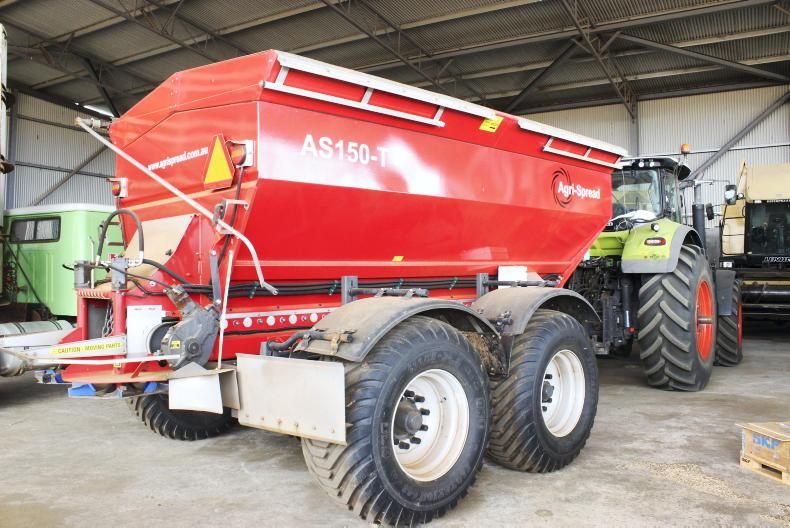

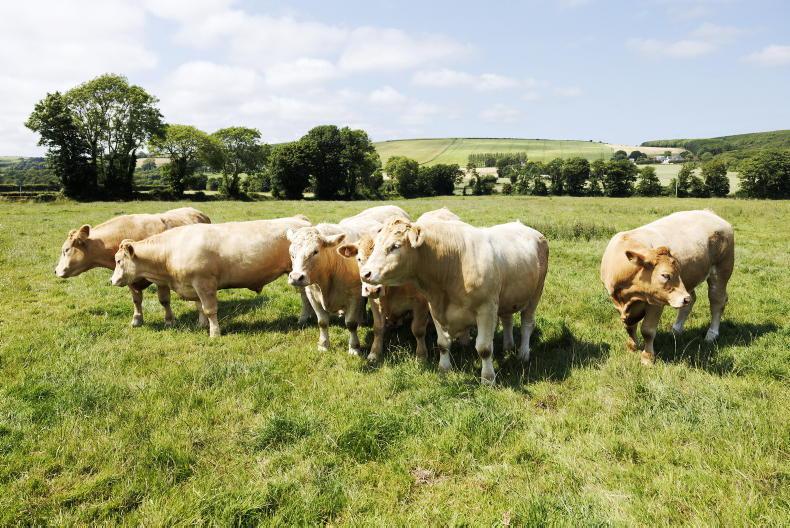

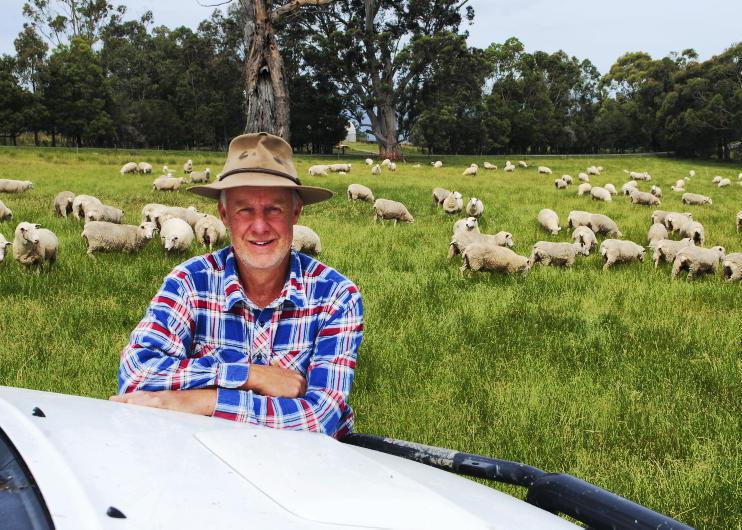

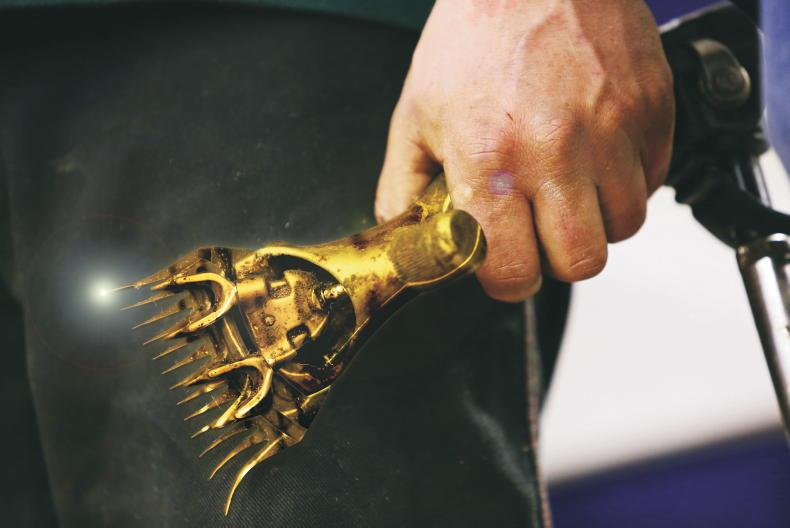
SHARING OPTIONS